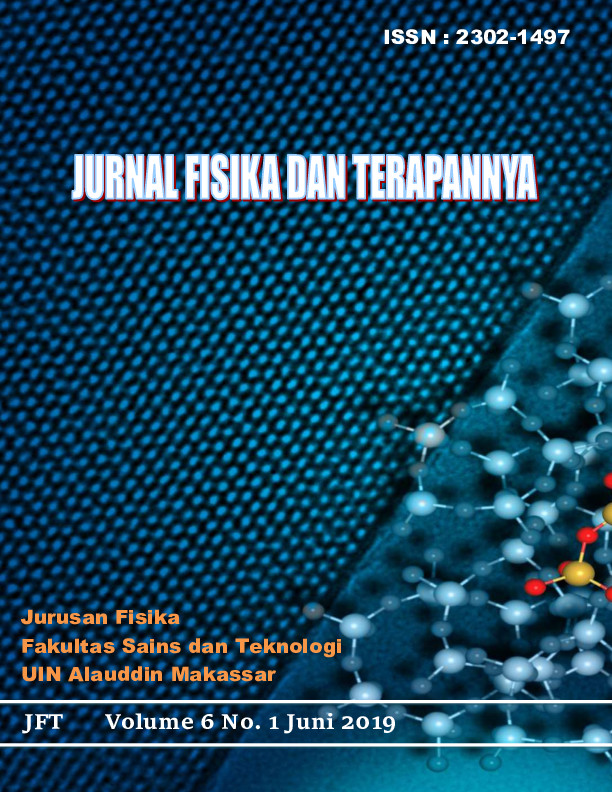UJI KUALITAS BIOBRIKET CAMPURAN TEMPURUNG KELAPA, TONGKOL JAGUNG, DAN SEKAM PADI DENGAN TEPUNG SAGU SEBAGAI PERAKAT
Abstract
Research has been carried out with the title of the biobriquette quality mixture of coconut shell, corn cobs, and rice husk with sago flour as adhesive. The purpose of this study was to determine the quality of the bio-briquettes with a mixture of coconut shells, corn cobs and rice husks with sago flour as an adhesive. In this study the raw material used was coconut shell with the process of drying at temperatures of 3500C, corn cobs with a temperature of 1500C and rice husks with a temperature of 1200C with the composition used was 60%: 20%: 20%, 60%: 25%: 15%, 60%: 30%: 10% and 60%: 35%: 5% then sieving particle size for all 40 mesh samples, mixing using 3 grams of sago flour as bio-briquette adhesive, then bio-briquette printing and drying is done. Furthermore testing of compressive strength, moisture content, ash content, calorific value and combustion time with the results of compressive strength testing using the tool. TA.XTPlus Texture Analyzer the best characteristics obtained in the composition 60%: 35%: 5% with a value of 9.82 kg /cm2, and the best characteristic moisture content was tested in the composition of 60%: 30%: 10% with a value of 4.59%. The quality produced from the biobriquette mixture of coconut shell, corn cobs, and rice husk with sago flour as adhesive can be categorized as good. This is seen from the testing of water content, ash content and calorific value that meets the Indonesian national standard and the burning time of 152.18 minutes, except for compressive strength testing that does not equal to the quality standards of Indonesia.Downloads
References
Adan, 1998, Membuat Briket Bio Arang. Yogyakarta : Kanisius.
Brades, A.C dan Tobing, F.S., 2007, Pembuatan Briket Arang Dari Enceng Gondok (Eichornia Crasipess Solm) Dengan Sagu Sebagai Pengikat. Jurusan Teknik kimia UNSRI: Inderalaya.
Mubarok, Rizal, M., dan Susila, I.W.,. 2015. Pengaruh Variasi Perekat Tetes Tebu Terhadap Karakteristik Briket Bioarang dari Limbah gergaji Kayu Mahoni. JTM Vol. 4, No. 1 (1-7). Universitas Negeri Surabaya: Surabaya.
Mutmainnah. 2012. Pemanfaatan Tongkol Jagung Sebagai Adsorben. JKK, 3(3): 7-13.
Permatasaari, Yudita, I., dan Utami, B., 2015. Pembuatan dan Karakteristik Briket Arang dari Limbah Tempurung Kemiri (Aleurites Moliccana) dengan Menggunakan Variasi Jenis Bahan Perekat dan Jumlah Bahan Perekat. Hal. 59-69. Universitas Sebelas Maret Yogyakarta:Yogyakarta.
Nurdin, Hendri. dkk, 2018. Karakteristik Nilai Kalor Briket Tebu Tibaran Sebagai Bahan Bakar Alternatif. Universitas Negeri Padang: Padang. INVOTEK (Jurnal Inovasi Vokasional dan Tekhnologi), Vol (18) No. 1: 18-24.


